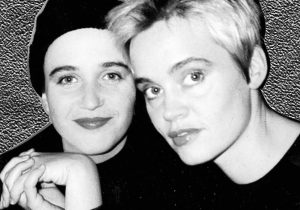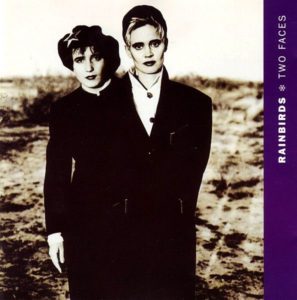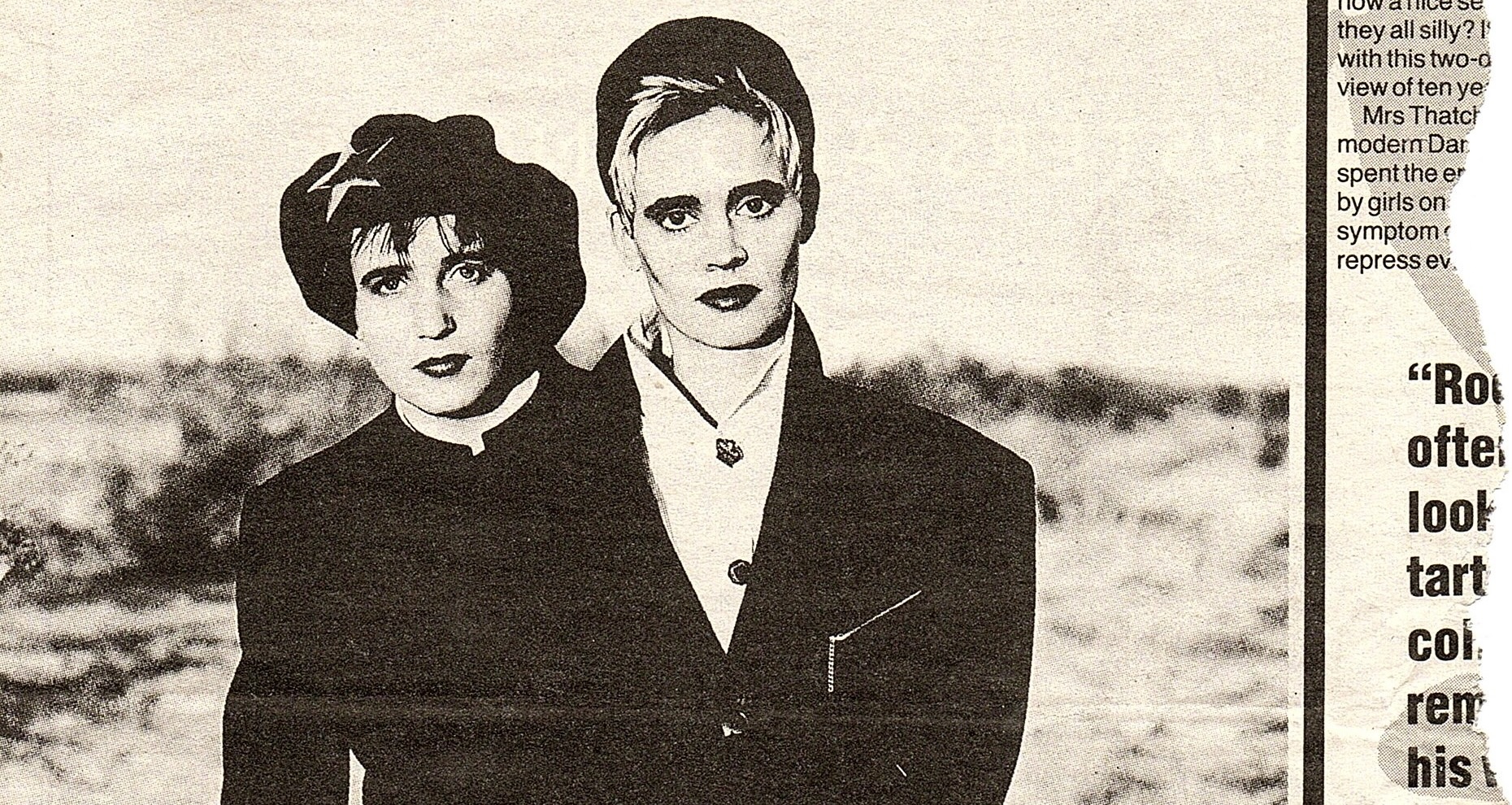Some things happened so long ago that any attempt to remember breaks down into molecules that keep being swept up in a Brandenburg sandstorm. It is 2023, a very dry and windy July. Everything is flying around chaotically and resettles, except for these few crucial moments which, however, lack a foundation, a significant phrase, a friendly anecdote. The superstructure remains, unblown. “Change is the only constant in life,” Heraclitus (b. ca. 520 BCE) is to have said. He indicated that you cannot step twice into the same river, for everything is in flux and nothing remains the same. This in turn explains very well what I was thinking back then, many many years after Heraclitus, when I thought of the name Rainbirds (b. 1986 CE) and why I used it for my band. A band of musical friends who changed constantly, both individually and with each other, and who remained in motion all the time, in swarms and formations. Sometimes someone would leave, possibly return, but maybe not. The transitions are fluid, part of the movement through thick and thin, and always on the cutting edge of time. But this is not about an image that I couldn’t hold on to. It is about how things continued with the Rainbirds after a rather sudden breakup of this first formation.
During the mix stage of the second Rainbirds album, Call Me Easy, Say I’m Strong, Love Me My Way, It Ain’t Wrong, the pianist and composer Ulrike Haage joined us. BECKMANN and Rodrigo González discovered her for us at a concert of her band Vladimir Estragon, with FM Einheit, Phil Minton, and Alfred Harth. I don’t know how it happened that the two of them went to the JazzFest Berlin. I guess they wanted to see FM, or The Ordinaires, who played the same evening. They brought Ulrike with them and that was good.
Fast forward to May 1989. The flying bird formation shrunk substantially. I traveled alone throughout Europe to promote Call Me Easy, exhausted and deeply sad about my band’s abrupt end and at the same time full of anticipation of the new prospect. I didn’t follow the suggestion of my manager, George Glück, to change the name when becoming a duo with Ulrike Haage (though I briefly considered launching the duo under the name Ha! Ha! Houdini). Looking back, perhaps I should have spent a bit more time contemplating the option of using a new name. Perhaps the third Rainbirds album, Two Faces, would then have had a greater chance of being listened to.
Or maybe not. George Glück also had a name for us in mind: Herstory. It would have been a bold step at the time to venture a completely new start with this name rather than announcing the release of Rainbirds’ Two Faces in 1991 with the addition, “The New Debut,” which is what we did. But neither had I taken the time nor did I make an attempt to understand everything that had happened up to then. And besides, I didn’t want to abandon the narrative of a constantly changing band so quickly.
I asked Ulrike Haage for a few comments about our work on Two Faces. She wrote that she “thought the reactions to our album were very marked by the fact that Katharina Franck had just dissolved the original lineup of the Rainbirds, thereby triggering a small revolution in the pop world. The album wrongly fell into a vacuum of resistance. … The album, which was a milestone for me and my first collaboration with Katharina Franck, represents an exciting time in Los Angeles, where we met the sound engineer Carmen Rizzo, who was then an unknown protégé of sound engineer and producer Susan Rogers. Carmen brought us together with musicians from Prince’s circle, who played our compositions with verve and enthusiasm. A world opened up to us that offered many musical possibilities, such as writing for an excellent string quartet, for the cellist and darbuka player David Daoud Coleman, and compositions for the Hammond organ. Parallel to this, we researched ways of dealing with new samplers by Akai. And all of this in the Sunset Sound Studios, where before us the greats of popular American music had recorded. And so we felt their traces or their spirits there. In any case, the entire atmosphere was highly inspiring.”
But before it got to the point where we could breathe the same air as The Doors, Janis Joplin, and Prince, a few other things happened. Ulrike went on tour with Lindsay Cooper, Phil Minton, and others. The Berlin Wall fell. I wrote the texts “Kino (The Movies)” and “Das finde ich schön (I find that beautiful),” which were not published until about eight years later, on the Hunger album. Whoever wants to can listen to these two spoken songs online and might notice how I reflected on the Rainbirds back then.

Ulrike also worked with FM Einheit from the Einstürzenden Neubauten, whom she met during Peter Zadek’s production of Andi in Hamburg. FM was about to record his first solo album FM Einheit STEIN and invited me to write and sing a text for one of his tracks. “Educação” appeared on and was also released as a single. With VOOV, who also worked with FM, Ulrike and I recorded the first demos in his studio. He accompanied us and all our studio equipment in the delivery van to Cazouls-d’Herault, a village in the south of France, helped us set up, and then drove the van back to Berlin.
The demos that were made in the tiny medieval village and elsewhere were largely already pre-produced songs when our management and the record company started contacting potential producers in the United States. I don’t remember exactly why we worked there, but we were of course delighted. It was quite a while before we connected with Carmen Rizzo and we almost flew back to Berlin without an album. We preferred not to tinker around on the songs with an absent star producer and his totally disinterested in-house technician, so we rebelled and broke off the session. George Glück went to LA to meet with the producer’s manager on the terrace of the Hotel Mondrian on Sunset Boulevard to negotiate whether at least the song “Head Over Heels,” which he liked, could be completed. I made it clear that I was very much against that.
Up to then our stay in Los Angeles had been rather sobering, although at the same time it was very exciting to be in the United States not as a tourist. We met other interested parties but their ways of doing things were foreign to us. We also noted that we were really pretty spoiled, since even indie studios in Berlin, such as Tritonus, were better-equipped than the spaces we encountered in LA. Not until we had arrived in the Sunset Sound Studios did we realize that every piece of equipment that was needed for a production had to be rented separately. Aside from good acoustics and the legendary atmosphere, the studios had nothing but a mixing console, a few room dividers, and a baby grand.
Before things could really get going with Carmen Rizzo, Ulrike and I went to Death Valley for a few days and to Caesar’s Palace in Las Vegas, where we had tickets for Dionne Warwick and Burt Bacharach. There we learned that the table we were seated at for the concert would improve depending on the size of the tip we gave the usher. Our seats weren’t bad. I don’t know how often Ms. Warwick and Mr. Bacharach had already reeled off their program. Elvis Presley had done 873 shows in seven years in Las Vegas and then he died. The bored, laid-back attitude of Dionne Warwick singing Burt Bacharach’s songs as he accompanied her on piano bordered on being a somewhat worn-out routine.
Dionne Warwick is still alive, and her interpretations are still magnificent, but Death Valley, the Amargosa Opera House at Death Valley Junction, Zabriskie Point, and especially the hot Mojave Desert wind on my bare skin, impressed me far more.
Ulrike Haage offered more of her thoughts: “Of course I also found the flair in Los Angeles back then to be fascinating, constantly meeting international artists, whether it was Björk at the breakfast table or Tears for Fears or the musicians from Johnny Depp’s club, … and taking part in a culture that had influenced me as an adolescent, whether it was the jazz, the pop culture, the books of the beat generation, or world history. At the same time the so-called second Gulf War started and it was shocking to experience the manipulative news reports in the United States. It was a strangely unfamiliar view of the world that the Americans used to commit to a war that once again did not take place in their country. All of that exciting, inspiring ambience flowed into our work on this diverse album, which might explain why we returned to Germany with music that the media didn’t like. It was a complex effort, with wonderful lyrics and the most varied musical moods, written and produced by two women, which the predominantly male critics in 1991–92 had difficulty acknowledging.”

Ulrike and I agreed that we did not want to spend any more time in our notes dealing with the reception of our first joint production. But the digital release of Two Faces thirty-two years after it was first released on LP, CD, and cassette tempted me to take an attentive look at the collected and published press portfolio from back then. Most of the concert reviews of our Two Faces + 4 tour—with Klaus Mages on drums, Raoul Walton on bass, Susanne Hassenstein on electric guitar, and Julia Palmer on cello—were positive. I just find it odd that many critics didn’t seem to be able to write a positive review of the new Rainbirds without disparaging the old Rainbirds. Although Rainbirds, in my view, turned out to be a timeless group of music-making birds of passage through and through, which have always flown the whole distance, no matter how many feathers were lost along the way.
And to close, more from Ulrike:
“PS, on ‘Two Faces,’ the song”: “I originally wrote the title song “Two Faces” as an instrumental piece for my band at the time, Vladimir Estragon, as a very emotional reaction to the Tiananmen Square massacre in Beijing. Katharina took up this title and transformed it into a linguistically excellent wordplay. We then rewrote it for a wonderful string quartet in Los Angeles. On the single release there is also a powerful and club-ready „Third Face Insanity Mix“ by FM Einheit and VOOV. It contains all the elements that made up our original collaboration: original recordings of Gertrude Stein, samples from studio sessions, choruses by Katharina, and prepared piano by me.”
Rainbirds’ Two Faces is now available on all familiar digital platforms.
© Katharina Franck, July 7, 2023. Translated by Allison Brown / www.textetage.com

The song „Two Faces“ is a masterwork and well worth listening to again after all these years.
Still fresh, interesting harmonies, instrumentation and Katharina’s phenomenal voice …
Thanks so much for the reminder, I’m listening through the whole album now.